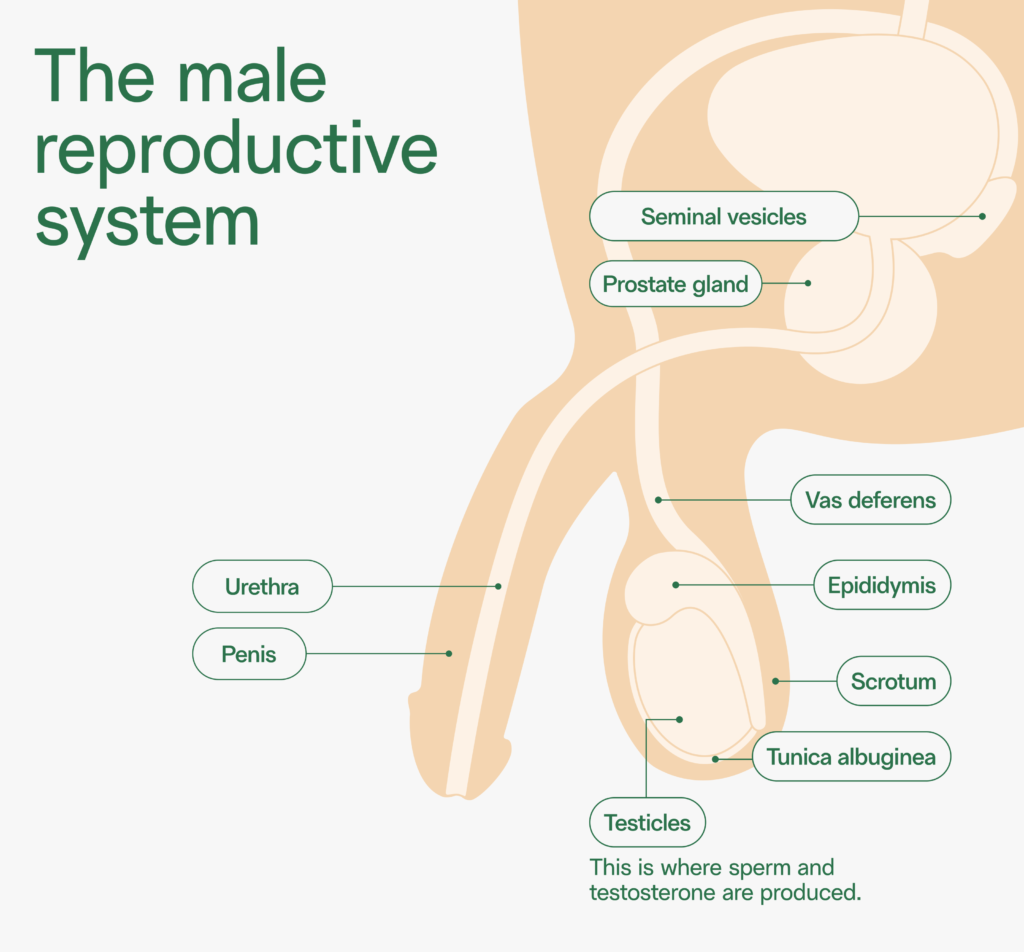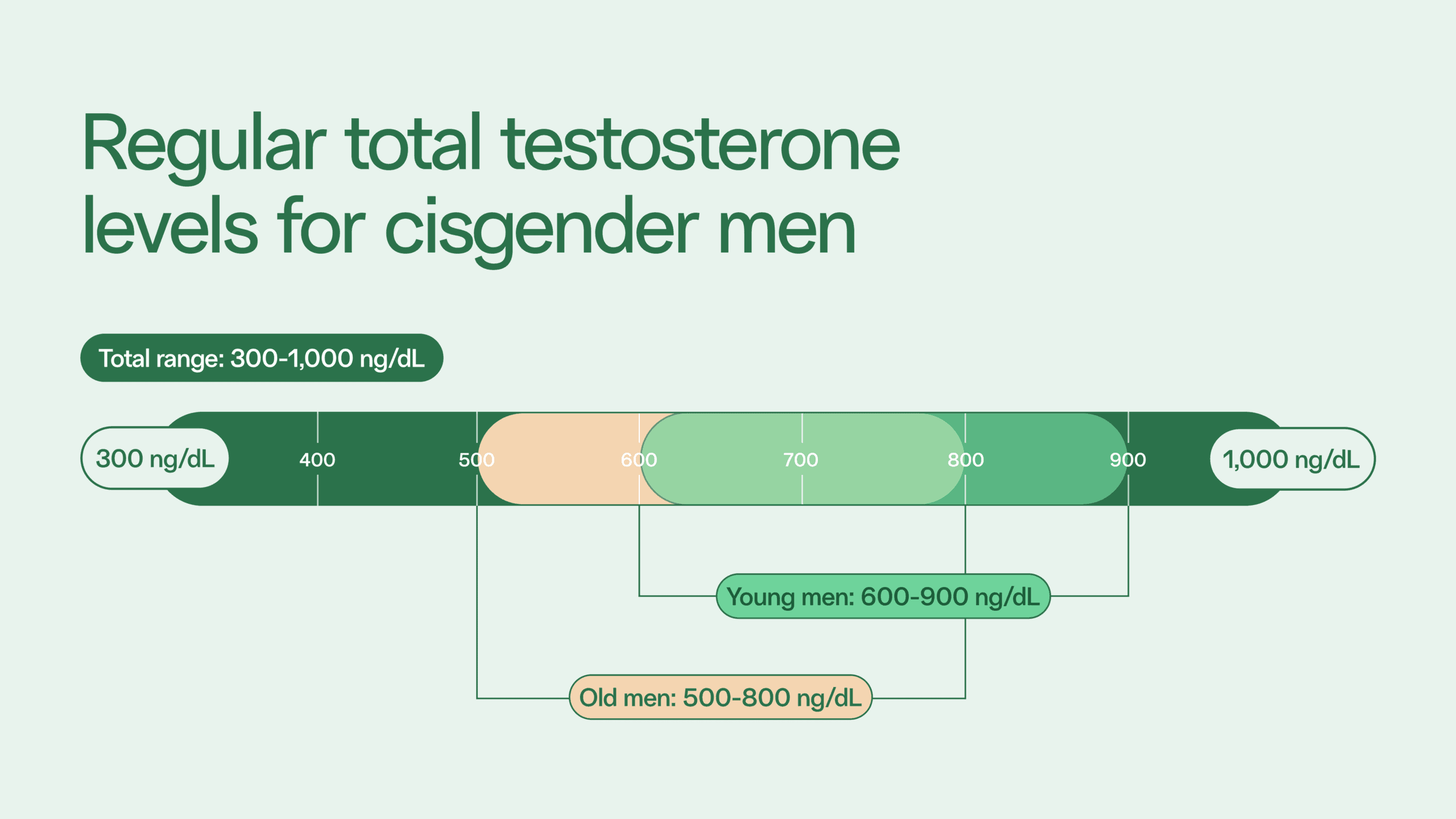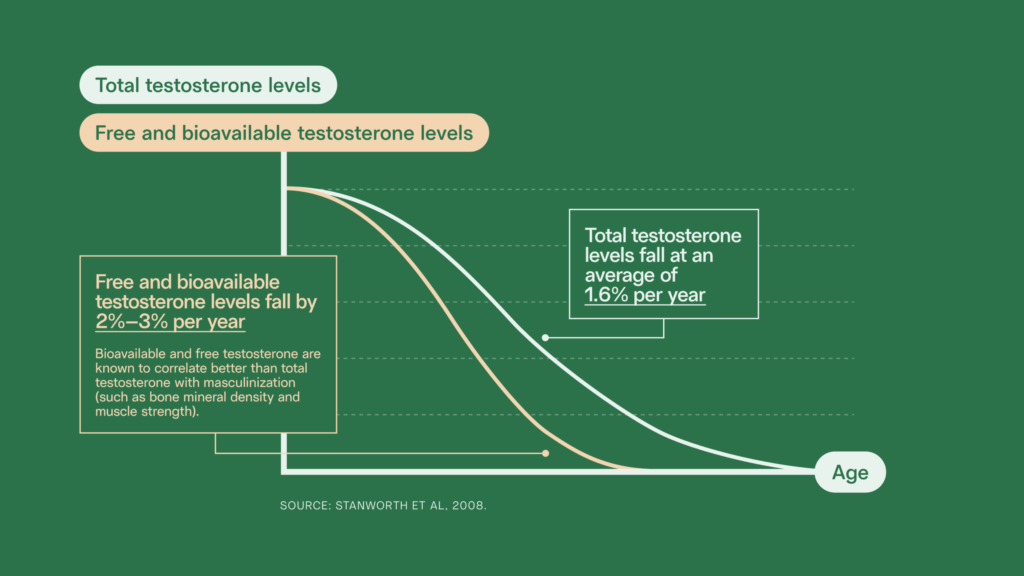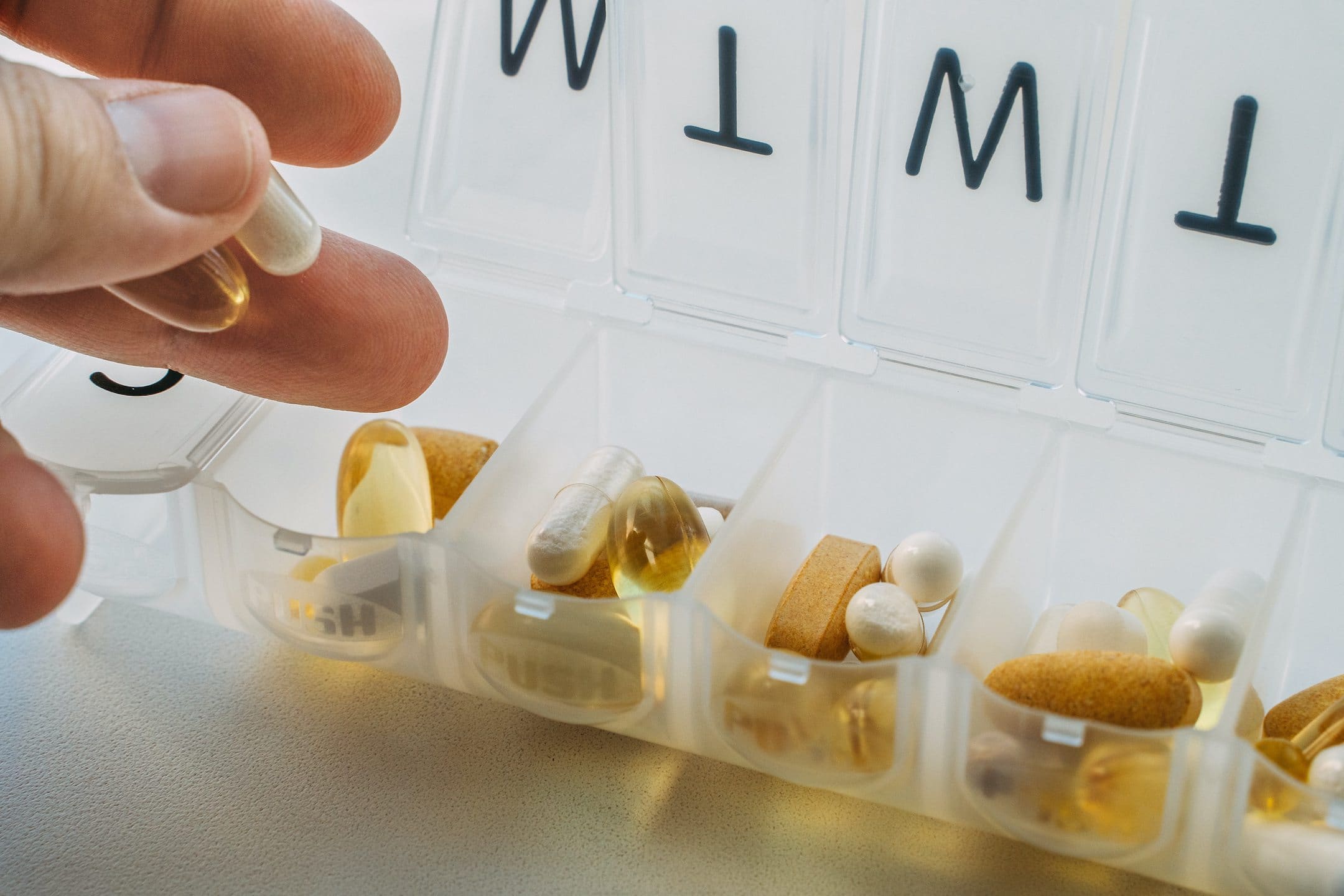Symptoms like fatigue and low sex drive could come from aging or health issues — or they could be signs of low testosterone. If you have low T, also known as male hypogonadism, you might experience some specific low testosterone warning signs. Let’s take a look at symptoms of low testosterone, and find out when it might be time to get your hormones checked.
Key takeaways
- Testosterone has a significant impact on male fertility and overall health, affecting areas from sperm production to sex drive to muscle mass.
- Symptoms like low libido, erectile dysfunction, and difficulty sleeping can be warning signs of low testosterone.
- Repeated blood tests combined with your symptoms can help your doctor diagnose low T.
The role of testosterone in the male body
Testosterone is a key hormone for men’s health and fertility. In the male body, testosterone plays a role in:
- Sperm production (spermatogenesis)
- Sex drive (libido)
- The descent of the testicles into the scrotum
- Characteristics traditionally associated with cisgender men, including a deep voice
- Muscle growth and weight management
- Bone density
Testosterone is primarily produced by the testicles. The pituitary gland and hypothalamus in the brain control the amount of testosterone that is made and released. Low testosterone levels may indicate a problem with the testes, pituitary gland, or hypothalamus.
Signs of low testosterone
It is possible to have low testosterone levels without any apparent symptoms. However, there are some common symptoms of low testosterone.
Everyone’s sex drive is different, so there aren’t precise guidelines around how you should feel. Furthermore, sex drive tends to decline with age, with one study finding that libido in men aged 40 to 60 was three times lower than in men aged 18 to 29.3
Sign of low testosterone: Low sex drive and erectile dysfunction
Still, if you or your partner notice a decrease in your usual desire for sex, low T could be the issue. Learn more about low sex drive and male fertility.
Testosterone levels and erectile dysfunction may not be directly related, as ED is influenced more by blood flow and nerve function in the genitals. Still, up to 35% of people with ED also have low T, and difficulty maintaining an erection can sometimes be a symptom of low testosterone.4
Sign of low testosterone: Reduced testicular size
Research indicates that testicular size is linked to testosterone levels.1 For those with low testosterone levels, the testes may be less than 20 mL in volume, which is on the lower side of normal.2 Normal testicular volume is between 12 and 35 mL.

Sign of low testosterone: Decrease in muscle mass and increase in body fat
Muscle mass often declines with age, but can also be a result of low T. Low testosterone generally results in reduced lean muscle mass and insulin sensitivity, leading to increased body fat. You may see more fat on your body, particularly in your stomach area. You may also notice general weakness and less power and mobility.
This is a “chicken and the egg” situation. While increased body fat is a symptom of low testosterone, obesity and excess body weight is also a contributing factor to developing low testosterone in the first place.
Sign of low testosterone: Decreased bone density
Testosterone helps maintain men’s bone mineral density. Men with low testosterone levels have twice the rate of osteoporosis compared to those with a standard testosterone range, which can lead to compression spine fractures and neck fractures in older individuals.5
Sign of low testosterone: Male infertility
Sperm production actually only requires a small amount of testosterone, so even men with low testosterone levels may be fertile. This is because testosterone is measured based on the amount in your blood, which is much lower than the testosterone levels in your testicles. With 25 to 125-fold higher testosterone levels in the testicles, your body likely still has enough for sperm production even if a blood test indicates hypogonadism.6
However, studies have found that those with testosterone levels under 264 ng/mL may see reduced sperm count or other measures of sperm health.7
Low testosterone can also cause other issues that make it harder to conceive, like erectile dysfunction and low sex drive. It’s still possible to conceive with these conditions using treatments or medications for erectile dysfunction or going through the process of in vitro fertilization (IVF).
Learn more about trying to conceive with low testosterone levels.
Sign of low testosterone: Low energy and depression
Low testosterone can affect your mood, reducing your energy levels and contributing to feelings of depression or anxiety. Interestingly, high testosterone may be linked to depression, too, so getting your testosterone level checked may be useful if you’re experiencing this symptom.8
Relatedly, studies suggest that low testosterone is associated with less sleep efficiency, including waking up more at night and spending less time in deep sleep.9 This could contribute to low energy and mood disturbances.
Both low testosterone and sleep problems are also linked to being overweight, so more research is needed to identify the relationships between these issues.
Sign of low testosterone: hot flashes
Hot flashes are a sudden feeling of warmth in your head and upper body. This experience is common in women undergoing menopause, but may also occur in men with low testosterone levels. It’s most likely in men with very low levels of testosterone, such as those who have undergone androgen deprivation therapy as a prostate cancer treatment.
Research on men with hot flashes as a result of low testosterone indicated that this symptom resolved after treatment, when testosterone levels began to rise.10

How low testosterone is diagnosed
A normal testosterone level for cisgender men is between 300 ng/dL and 1,000 ng/dL. Younger people are at the higher end of this range, around 600 to 900 ng/dL, while older individuals generally have levels around 500 to 800 ng/dL.
Testosterone levels are checked with a blood test. You may be diagnosed with hypogonadism if you have symptoms of low testosterone as well as multiple blood tests indicating testosterone levels under 300 ng/dL. Testosterone levels are highest from 8 am to 10 am, so the blood test should be done between 7 am and 11 am for the most reliable results.5
Learn more about hormone testing for male fertility.
Causes of low testosterone
Low testosterone may be caused by genetic conditions like Klinefelter syndrome, medical issues like undescended testicle or liver failure, or certain medications, including cancer treatments. You may also have an increased risk of hypogonadism if you have health conditions like diabetes, obesity, high blood pressure, or asthma.
Testosterone levels also naturally decline with age, typically falling around 1% each year after you turn 30.5 Around 39% of men aged 45 or above have low testosterone.11

Treating symptoms of low testosterone
Testosterone replacement therapy (TRT) is a common treatment for symptoms resulting from low T. If you’re diagnosed with hypogonadism, TRT may help improve your symptoms.
Taking TRT should start to improve your sex drive, energy levels, and mood soon after you’ve reached a normal testosterone level. Even after that, TRT may help improve your bone mineral density, body fat levels, and lean muscle mass within about 6 months.11
Testosterone therapy’s impact on fertility
Male infertility is one symptom of low testosterone that cannot be remedied with TRT. In fact, TRT upsets the balance of male fertility hormones, halting sperm production. TRT leads to azoospermia, or zero sperm in the semen, in the majority of men after just 4–6 months of treatment.12 There is no guarantee that sperm production will recover if you pause testosterone therapy.
Those with low testosterone who want kids in the future should consider freezing sperm before TRT.
References
2. Nassar et al, “Physiology, Testosterone.” 2023.
4. Leslie et al, “Erectile Dysfunction.” 2024.
5. Bassil et al, “The benefits and risks of testosterone replacement therapy: a review.” 2009.
6. Smith et al, “The Regulation of Spermatogenesis by Androgens.” 2014.
8. Johnson et al, “The effect of testosterone levels on mood in men: a review.” 2013.
11. Dandona et al, “A practical guide to male hypogonadism in the primary care setting.” 2010.



